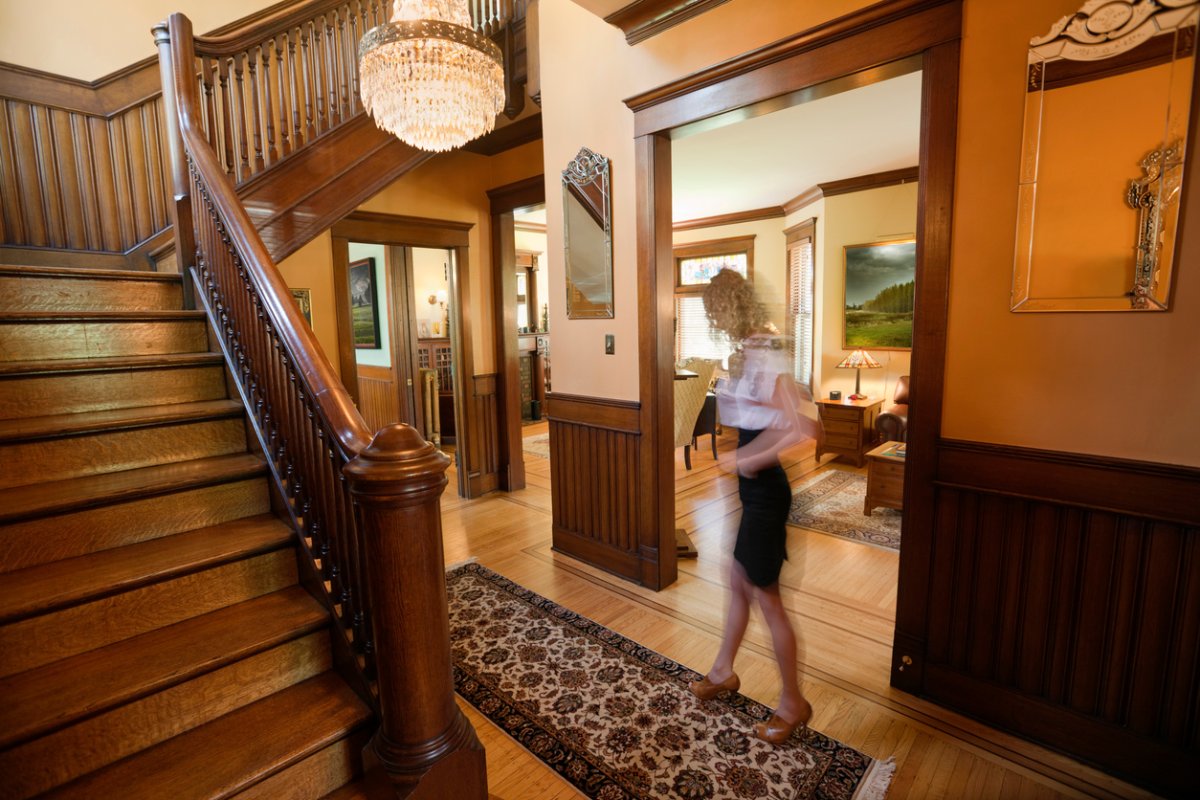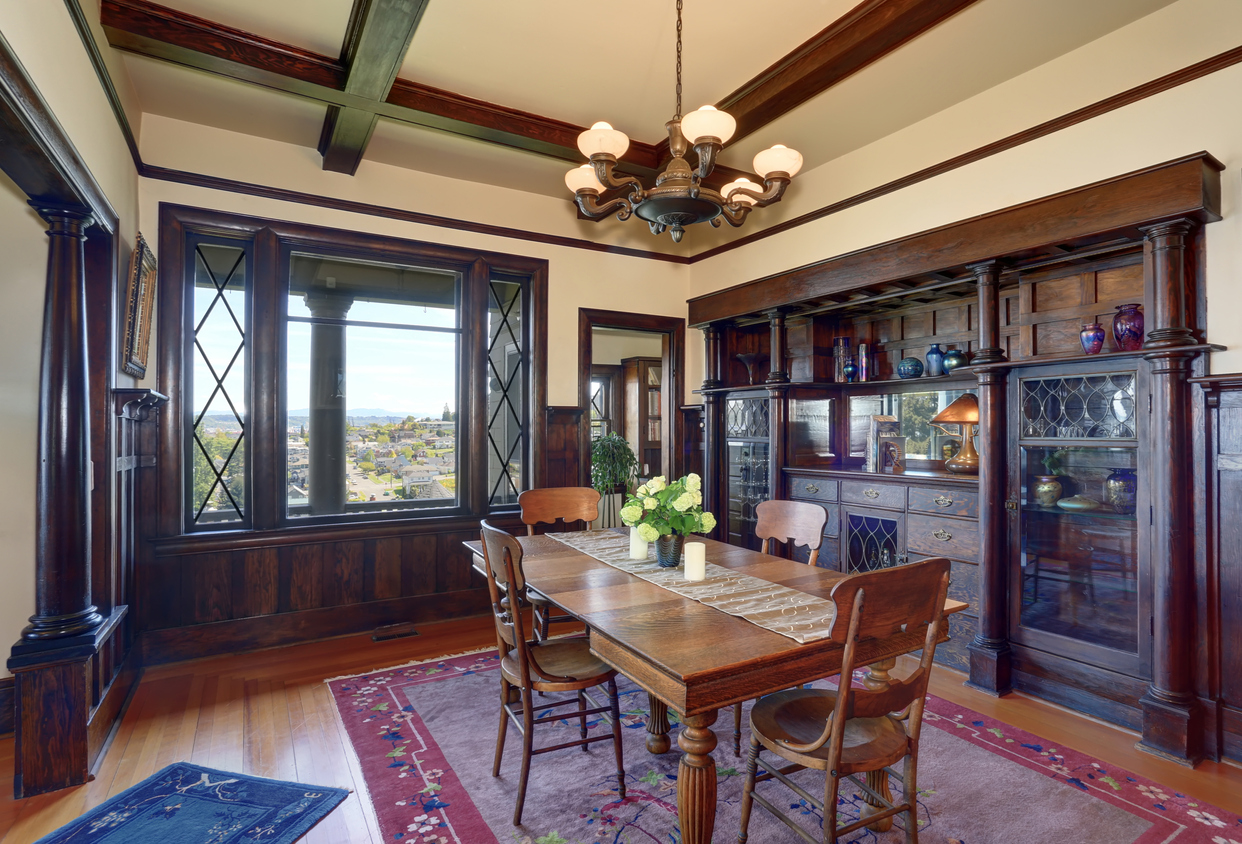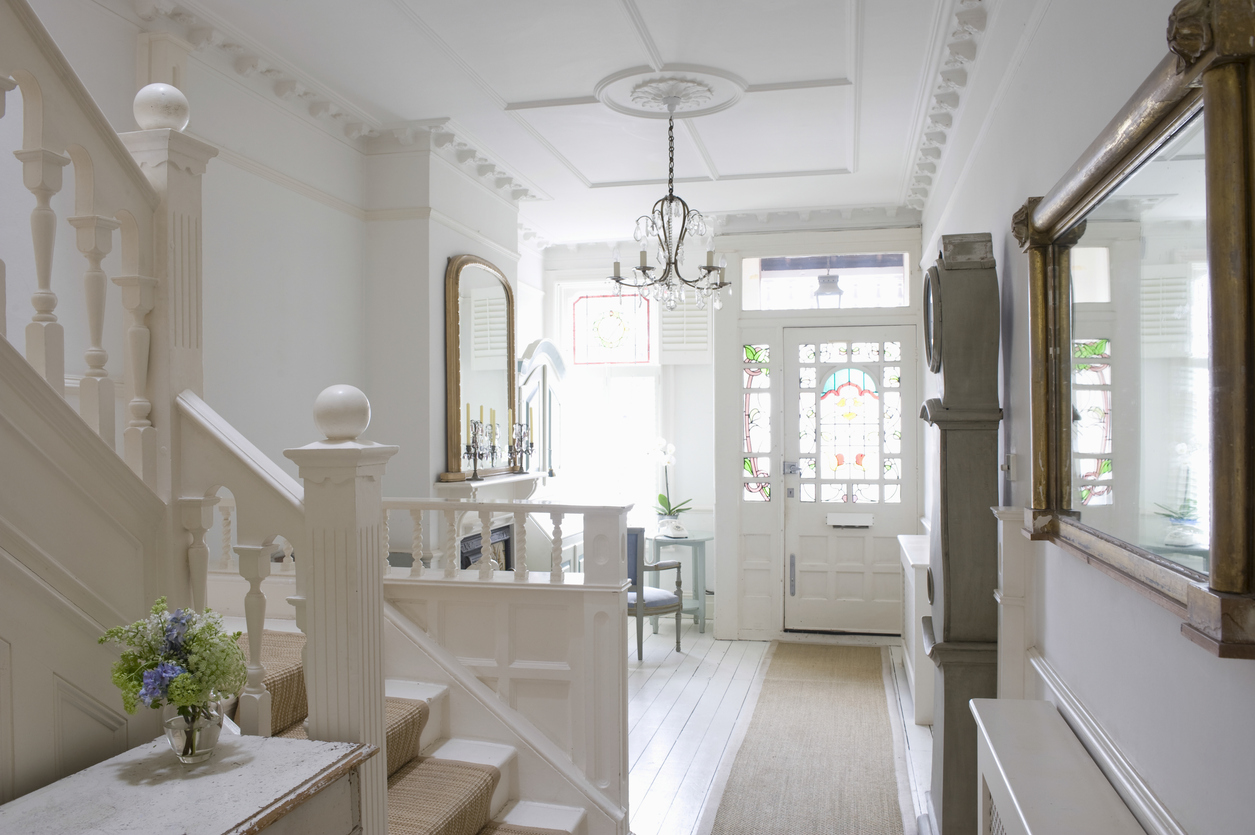

We may earn revenue from the products available on this page and participate in affiliate programs. Learn More ›
Q: A friend recently came for dinner with her new beau, a real estate agent, who remarked that if we ever want to sell our Victorian-style home, we should plan to paint all the interior millwork. We were surprised, as we’d always considered it in its original state to be part of the house’s charm—and a potential selling point. Who’s right, and why?
A: “They don’t make ’em like they used to!” certainly applies to homes built in the latter part of the 19th century. Many of these homes had an abundance of intricate, natural-toned millwork that makes purists swoon, but has others reaching for their paintbrushes. Today, the to-paint-or-not-to-paint debate is argued vehemently on both sides, but determining a winner is tricky because the subject is so, well, subjective. Here’s how to figure out what’s right for you, now and down the road.
Unpainted is historically correct.
While the millwork on the exterior of Victorian homes was typically painted, the interior trim was most often given a clear coat to show off the natural wood. Depending on when the house was built, the original finish may have been shellac or varnish; the stains we have today were yet to be developed. If historical correctness is your priority, stain trumps paint for indoor trim.

Unpainted millwork may not pop.
In a freestanding Victorian-style home with natural light pouring through lots of large windows, the details of original woodwork are likely to stand out beautifully. No such luck in a row house that gets limited natural light! There, dark-stained trim might look muddy and make the room seem dim and closed in. Painting the trim in a light shade would lend the interior a larger, brighter, airier vibe. What’s more, light-colored trim can serve as a backdrop, allowing decorative elements to stand out, while dark, ornate woodwork might fight furnishings and art for attention.
Consider the vibe of the rest of the house.
If you’re planning a renovation, perhaps even hoping to knock down some walls to bring a more open plan to your house, unpainted millwork may end up looking out of date. For cohesive aesthetic appeal, designers may advise a fresh coat of light-hued paint.

White trim is in right now.
The trend of the moment is white-painted trim. So if you’re putting your house on the market tomorrow, real estate pros might urge you to paint the millwork white today to attract potential buyers and maybe amp up the sales price. However, grandmillennial style—an appreciation for the decorative design of days gone by, a backlash against the sleek midcentury modern that’s held sway for some time—is catching on. Fashion is fickle, so when you’re getting ready to sell your home, research local home sales before deciding whether to paint old woodwork.
Designers encourage mixing it up.
Purists implore, “Don’t paint!” Real estate agents cajole, “Consider a coat.” Designers, however, see each home—indeed, each room—as unique, and advise accordingly. Often, better-quality wood was used on the first floor of an older house, so original unpainted trim in, say, the foyer and dining room may have true beauty and value. Upstairs, where lesser-quality wood may have been used, white or pale paint may be best, particularly if it freshens up small bedrooms and bathrooms. And whether upstairs or down, a mix of paint and stain in the same room can look spectacular.

Proper painting technique is key.
Most novice DIYers can handle painting interior walls with good results, but painting trim is more challenging. Choose oil-based paint, which is thicker than latex, to get into all the nooks and crannies; a semi-gloss finish will be reflective while disguising imperfections. You’ll need a steady hand and good brush technique to ensure that all the intricate details will be on display in the end.
Paint isn’t permanent, but…
Removing paint, especially numerous layers of it, from elaborate millwork can be tough and time-consuming. While there are various methods and products for doing so, many pros rely on Peel Away to banish up to 30 coats of oil-based paint in a single application.
A homeowner’s perspective.
When we bought our 1893 brownstone, its bounty of intricate millwork was all bright white. It wasn’t until my husband and I were hanging out with some neighbors that we learned how the owner previous to the people who flipped the house to us had spent years restoring the trim to its original state. True, we do suffer occasional pangs of wood envy when visiting folks in our historic hood who still have unpainted gingerbread, but we stuck with white, which shows off every crevice and curlicue to best advantage. Later, when we painted the bathrooms, kitchen, and hallways, we went with historical colors, keeping to pale shades for the trim. This may well be our forever home, and we live by a “we like it!” ethos. Should we ever put our place up for sale, we probably won’t do much to make it more marketable. The new owners will have to consider themselves lucky that we didn’t take our original millwork (and tin ceilings and soapstone mantelpieces) with us.
